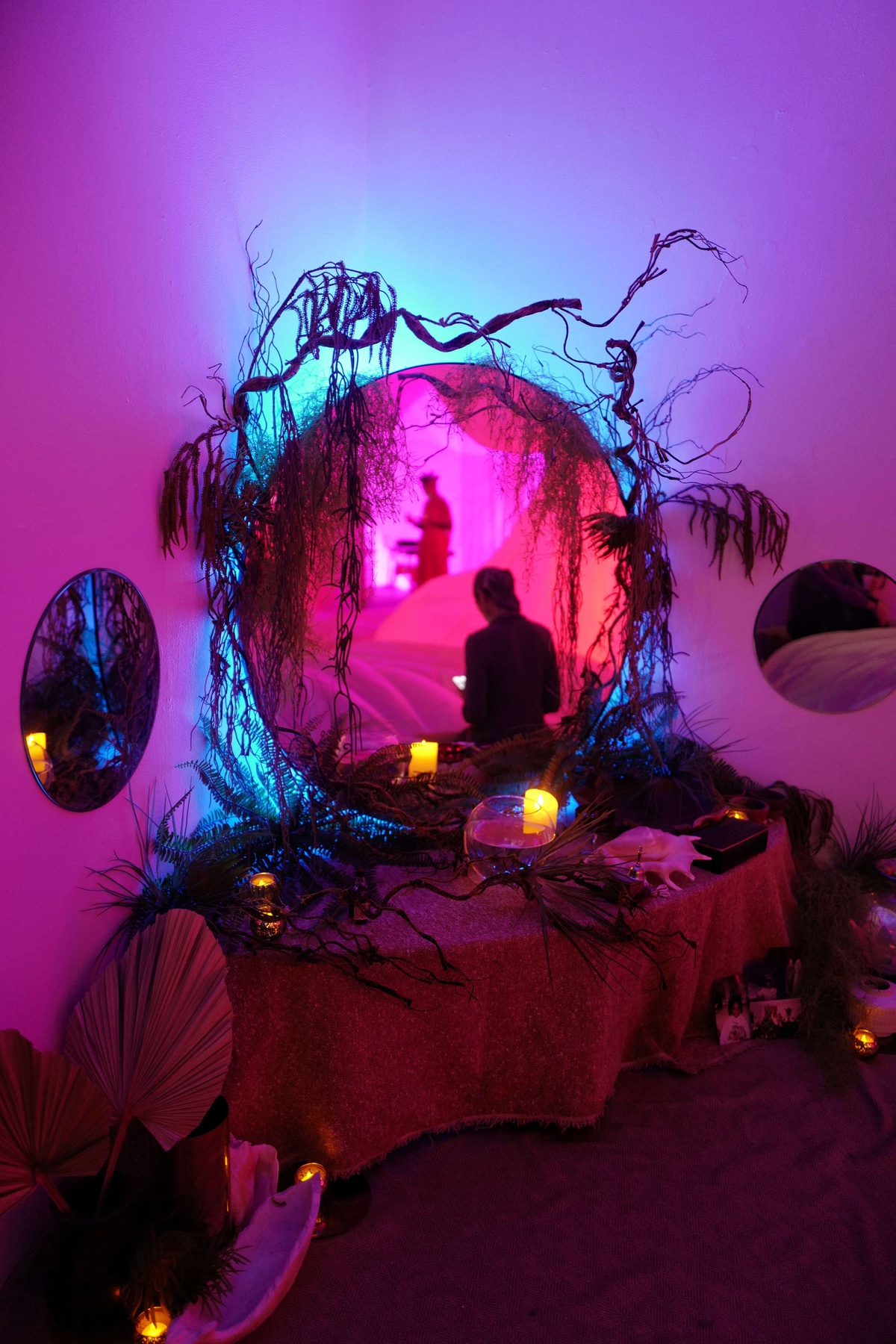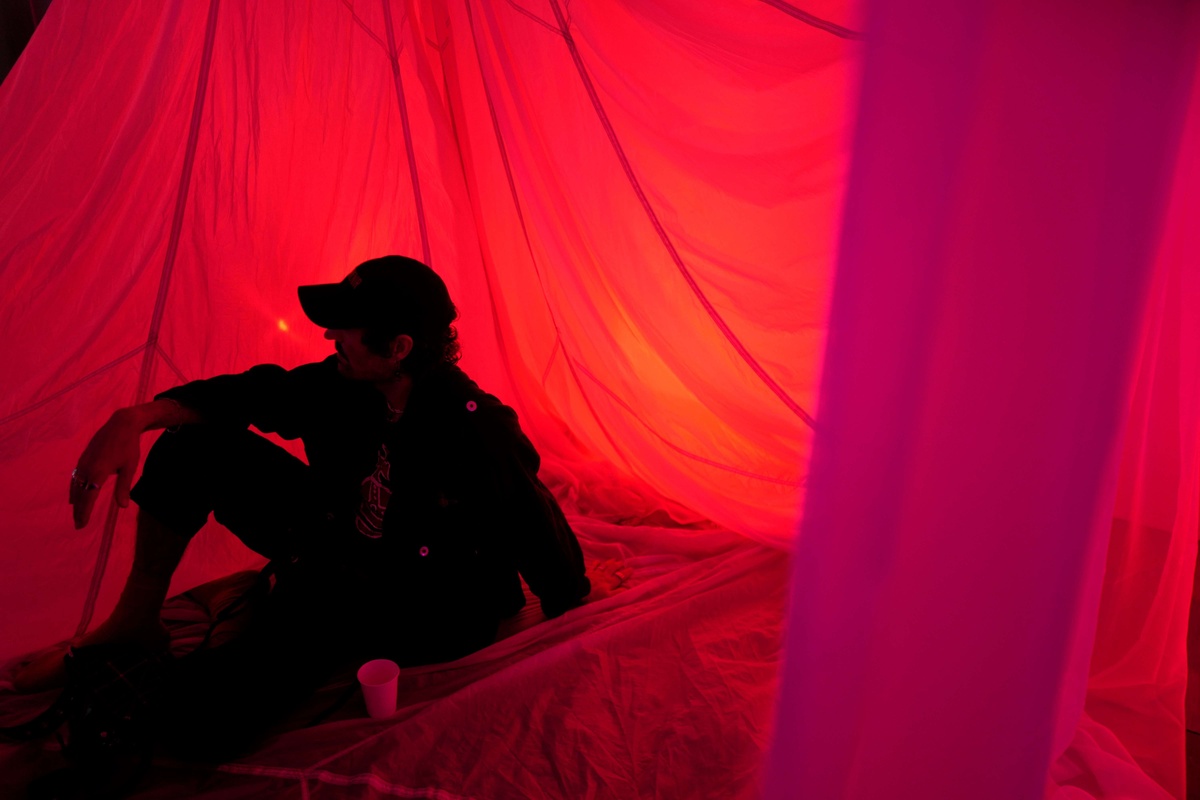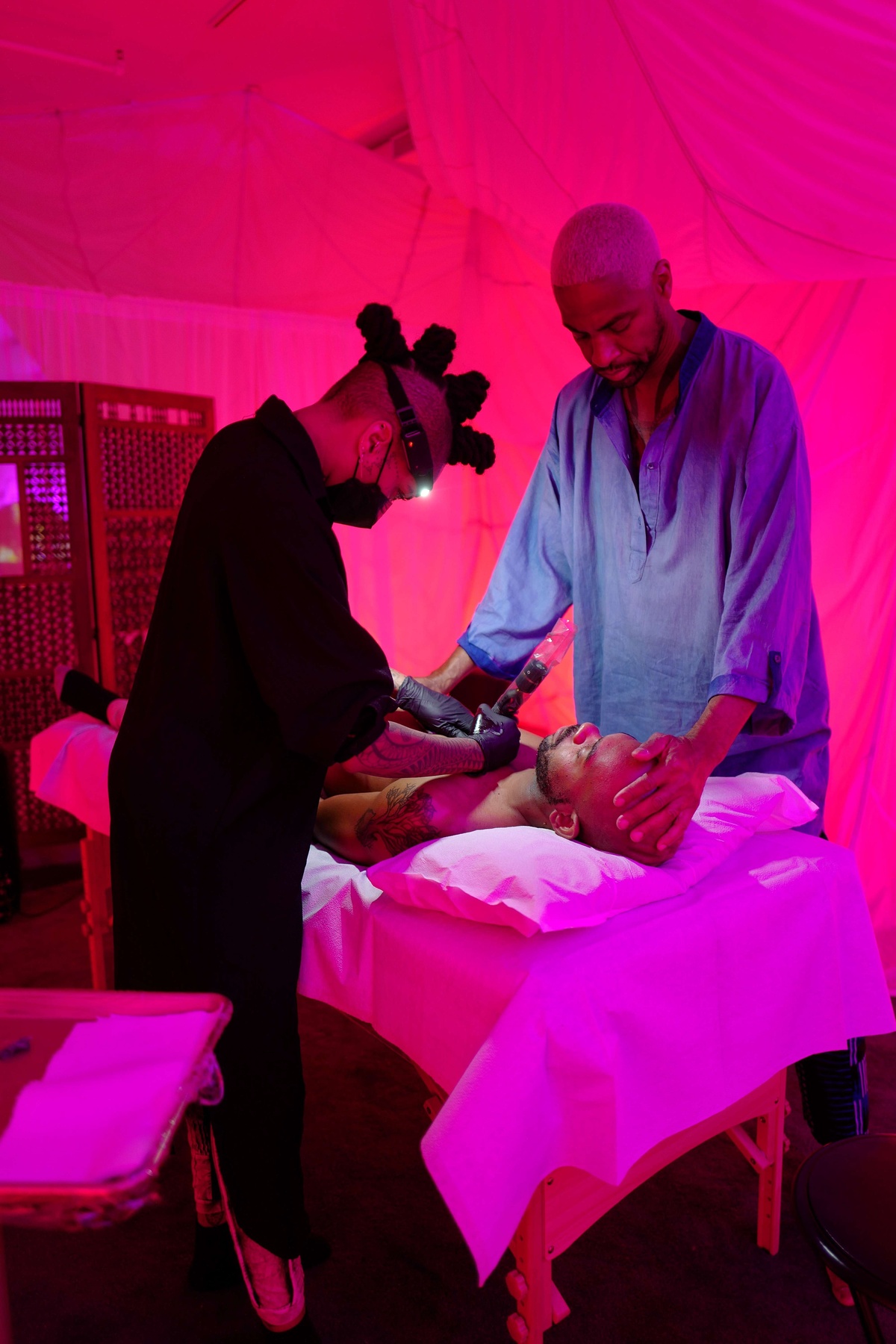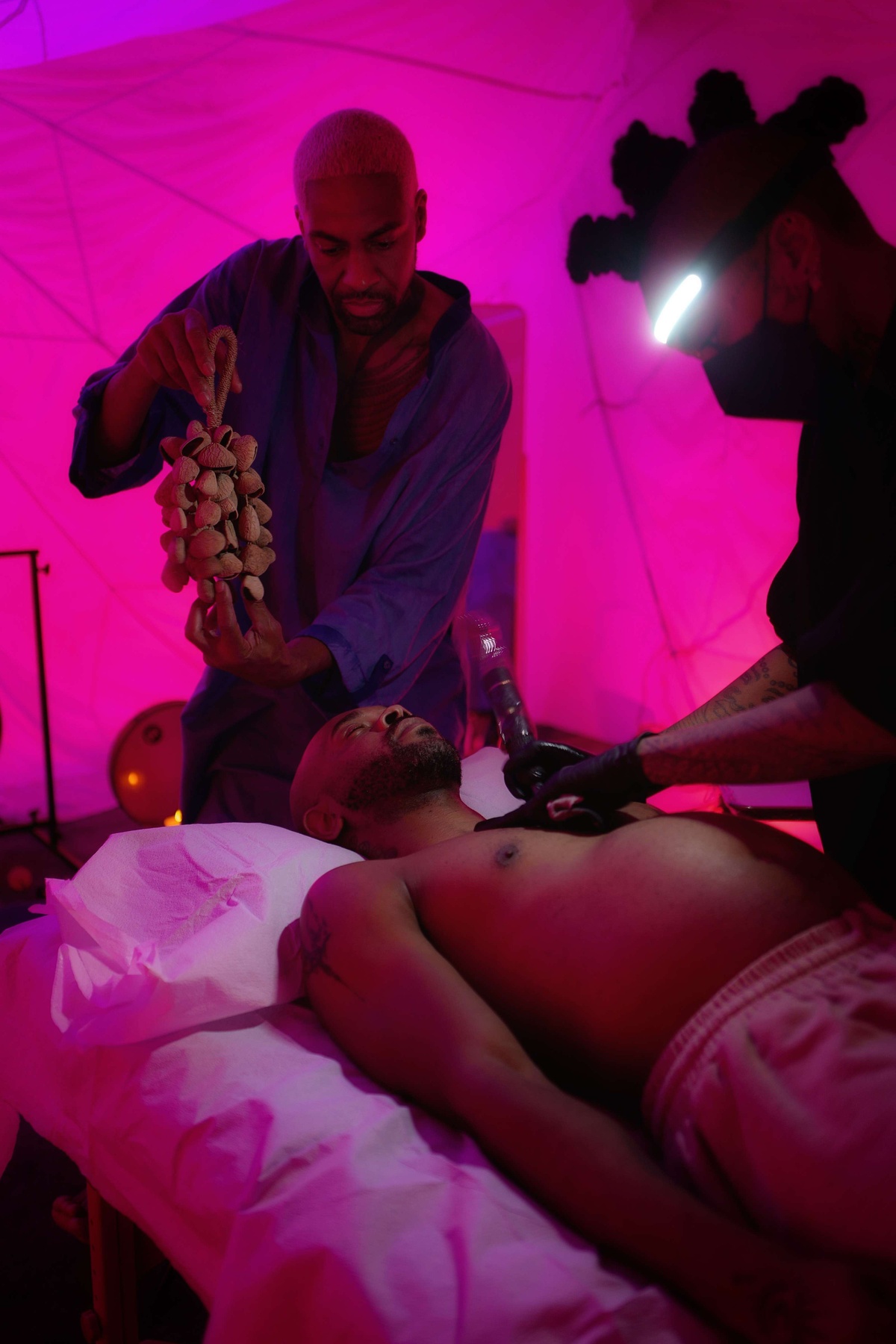Recess Reflection—Part 3 of 3
Artists & Recess Co-Directors, Lindsay C. Harris and Shaun Leonardo on care in transition.
Shaun Leonardo: This conversation marks the end of a year of major transition at Recess; with the departure of our founder and former co-director, Allison Freedman Weisberg and the welcoming of you, Lindsay, our new artist & co-director. In transition, all of the moving parts must be reconsidered… not solely the inner workings of our collaboration, but all of the dynamics and mechanics that hold our ecosystem together. But while we are here to discuss change and evolution holistically, I do still think we must start with the how and why of co-directorship… no? How have our learnings around shared leadership been central to this transition?
Lindsay C. Harris: I came into this role because it was a co-directorship. If it was not, I would not have wanted it, period. I think there's so much beauty in collaborative work and in shared power. It's the thought leadership that's necessary in order to maintain accountability when making important decisions that affect people's lives. To do that consistently alone is not equitable. I think that's part of the ethos that we share, certainly. Since I’ve come into this role with you, Shaun, a lot of where we've been at is trying to understand where we are as an organization and as two humans and as leaders. Even though we have known each other a while, we're definitely getting to know each other a lot better now. It's a different level of intimacy and partnership. And also trying to understand all those questions for ourselves in relation to where the staff are at this moment and using a shared power model to understand what leadership is right now in the context of the entire Recess ecosystem. When we're not scrambling to make decisions about money, we can slow things down and make more decisions about how we operate... I think a lot of it's about operationalizing those value sets and the things that have been in practice, in work with Recess for so long. And now what does that look like in this moment of shifting to leadership of color, as we're trying to work out the kinks of what is artistic practice, what is administrative, executive, what feels right for us in our experience previous to now. I come from a youth leadership background, and so just trying to feel that out. We’re talking about sharing responsibilities programmatically, splitting that up who leads Assembly and Session and some core areas like operations, development. But we haven't fully done that yet because I'm still learning and that's going to take a while, but we're already seeing, I think, where it becomes hard. We can't both be involved in everything, but it's still a smaller organization, so there's a level of that that is totally possible. I think we’re able to take out time and just try to feel that out, which in itself is a privilege to have that space.
S.L.: You really covered it all, Lindsay. I think what continues to attract me to co-directorship is the experiment of horizontality in decision-making. What you are noting is that we come into this space with the experience of our previous institutional roles, in all their complexities. Filling the co-directorship, therefore, requires an active process of questioning: What can I do differently? What can I shed? What can I abandon from the previous institutional actions that I’ve internalized? How do we create a different environment, different conditions around mission-driven work that allows for care and support?
The model of executive leadership in which the pressure falls entirely on one individual is antiquated and inhumane. I really want to echo that sentiment, Lindsay. But beyond sharing the burden of responsibility, co-directorship also permits the space to address the limitations of my own practice and thinking. This is where thought partnership serves such a great purpose—identifying organizational needs that I may not see myself. Co-directorship uplifts the necessary visioning that is going to get the organization where it needs to go.
L.C.H.: Right. So I think whatever we decide, whatever will come from that for our roles as they evolve along with other staff, I imagine it’s still going to continue to evolve as more people come and go too. So that's where my thoughts are–if I'm here to invest in exploring what's my personal learning, what's the organization’s, where the organization is at, I think that necessitates a certain openness, spaciousness. Recess is just a place that also allows for that type of gentleness and learning and softness and just understanding that it's going to take time and not having the expectation to move with a certain swiftness.
S.L.: That's right. And perfectionism. There is a piece of this analysis of leadership that also suggests a field wide critique. I think it's important to explicitly state that pipelines to leadership have privileged very few, while also challenging the way executive leadership, as occupied by people of color, has gone unaccompanied by the development of systems of support. And so, we must cultivate leadership differently at Recess. I do contemplate the learning curve and think about the ways in which I was and was not built up toward leadership in previous positions. So in respect to how that understanding finds its way into my role here in this organization, I would say, given our structures and shared power model, that it is quite literally my job to envision Recess post ‘me.’ If you think about the organization as an evolving, living organism, how do you create the conditions for continuous change, while, foundationally, embedding its values? That's how I've started to see the experiment that is Recess. When you pull out one piece, the entire system can absorb newness, while still being true to itself.
L.C.H.: Yeah, I do feel like that is a lot of what we're talking about too in the context of relationships and relationships that are different now post founder, especially. That so much of Recess also is relational, but then also how much of the things that make up the organization are actually not documented. And then what do you lose when you lose an individual? And so if it's so special, if it's moving in this way that is really unique and is a leader in the field, how can that also be sustained no matter who is in this space? And that's a lot of what we've been honing in on. You want to acknowledge we're all humans. We're not the same.
S.L.: One of the distinctions I would make is how one discerns between a collective and a project. At the heart of both is a collaboration. If you can envision a nonprofit organization as one or the other, a collective or a project – what is at the heart of that work, of that energy, that synergy, will be collaboration. But in a collective, a sense of purpose quite often leaves with the people. Whereas in a project, ideally the collaboration is continuously fueled by new individuals.
Leaning into the potential of organizational experimentation as a “project” is quite uncommon in the broader arts field. There are many expectations around not falling short—that experiments can't fail. But failure is probably the best case scenario, in some respects, in terms of learning for the field. One such experiment is our vision statement of ‘artists and youth as leaders.’ In defining that experiment, and therefore, the “success” of all the artists that make up our ecosystem, we must continuously ask what leadership is in relation to Recess as a project, and for this current moment as it differs from the past. Maybe that requires some invention. It certainly necessitates a curiosity and difference in the ways we think and approach things.
L.C.H.: Also, it frees us up to try to do things differently. It’s always going to be new in that way. And you can get so theoretical with this, right? In a way, everything is new. This moment has never existed before. But we know we must also learn from the past and everything that the ancestors have given us and built for us and recognize what we're building upon through that process. I see my role as being able to listen, learn and understand where I can be of support, where my lens of experience and the questions and curiosities that come through that process of newness coming into the org are useful–and being able to illuminate and strengthen what Recess has already been doing that’s been really transformative for staff, artists, and youth. Some of what we've been talking about is how can these things not be at the whim of individuals, but really be structural? I'm very passionate about that. Care is actually something that can be put into practice and not something that just happens because a few people want it to happen as an organization. Care is a continuous practice. And there is much to be learned from the failures in that practice.
And so how has that looked at Recess? What can that teach us about what needs the structural confidence and prioritization that comes from being operationalized? What have we not even thought about? And how can we learn that from young folks, from staff, from artists? A care and capacity fund for artists and staff…an emergency fund for imminent need…these are fairly simple yet really rare and unique containers that under capitalism, allows for greater sense of safety in our communities. I'm excited to be able to build on Recess's legacy of pushing boundaries in the field of contemporary art, arts abolition, of internal structures of leadership. And so I'm excited to have time to understand that for myself and be in the messiness, all of it, to bring folks into that process of learning. And also just to, as I said, be gentle in it, be soft in it, be sweet in it, all the things, just understand what the fun and the joy within that work and in our work can look like.
So right now, as I’m newly in this role of co-director, I’m trying to resist any expectations of executive leadership and just cherish the spaciousness afforded me and us in being able to slow down and take all this transition in. And Shaun, I don't know what the poetry of this is, but there's something very poetic that both you and I were (separately) tattooed downstairs in transformative experiences by our session artists King Cobra and Hue Hallums in their project (Conjuring the Past, Marking the Present) that's looking at ancestral healing and relinquishing control too. I mean…how is that not in relation to abolition and a certain framework of care and accountability?
So Shaun, let’s reflect further on growth and learning. Internally, one glaring need that arose this summer was literally naming that we all need more time together. Last year was the first year Recess was fully back for in-person programming, and as I’m sure everyone has experienced, there are a lot of lessons learned that are being applied to this new year. And so now one element we’ve acknowledged is that we need more time for staff to really gather, to be able to debrief with each other, decompress with each other, streamline communication.
S.L.: I think, together, we have both become stronger advocates for praxis as the way in which Recess evolves. How does the organization continuously fold in reflection while doing, while moving, and while being in relationship? Felt and actionable introspection is often the first thing to be sacrificed when swept up in the movements of a nonprofit: do, do, do… all the programmatic necessities. And so, it has been a very good reminder that no, internally, we need those moments to recalibrate together and see what comes next. But these moments do come as an expense alongside programmatic costs. We quite literally require funds for staff to get together. It's just very one-to-one in that way. How do you prioritize being together? You book it into the budget. The wider and more important question, then, is how do we continue to advocate for the prioritization of people in everything we do. It requires a huge effort. It is a significant investment of time and energy to continuously craft a story that promotes a framework of care and accountability; therefore, messaging, that by supporting Recess, you are supporting us holistically in all the ways that the org wishes to define itself—and that definition starts with how we consider everyone that makes up our ecosystem.
L.C.H.: Yes, in much of my previous experience, especially within youth development spaces, there has been constant reflection, evaluation, and evolution based on the theories of change and meeting the needs of young folk. So I think I've taken it for granted. After every activity, I’m used to a brief "Okay, how was that for you?" Whether that's with young people or with staff, with consistency. But that also takes prioritization in both time and resources, as you've noted. How are we able to allow for that breathing room? You can do that on the granular level of a program or event, but when it's bigger picture things that require more breathing space...I'm just thinking about us sitting here right now near these windows, looking out at the air we literally need to breathe. And looking out beyond this physical space to the street below. That breathing room can also be what allows for the healing and new imagination to come back into us as humans. How do we find that balance, within the context of our work, of bringing that reflective practice back in and making sure that we have that breathing room in the granular as well as the expansive? I know a lot has occurred that is important for the organization to learn from, and it's also hard when so much of it is personal, is relational–it's about people. So as we end this year amongst so much violence in the world, how can structures be put in place to lead with care, lead with accountability, lead with power shifting, open lines of communication, and do things differently.











